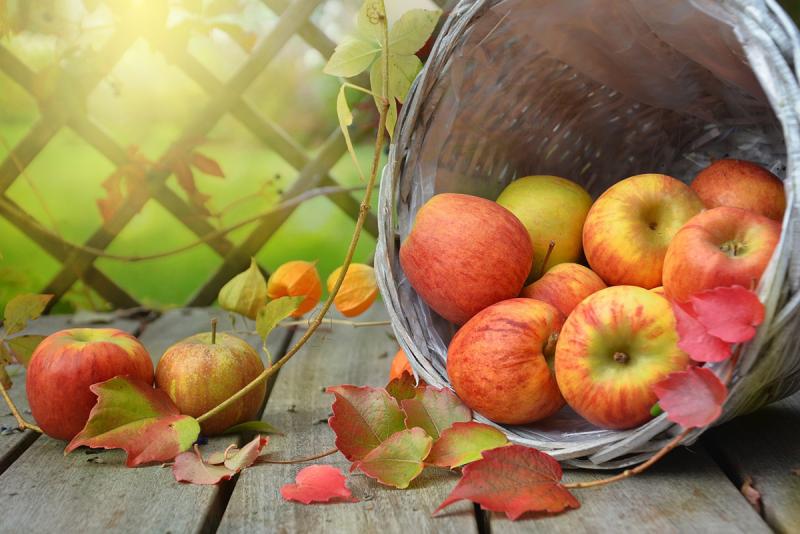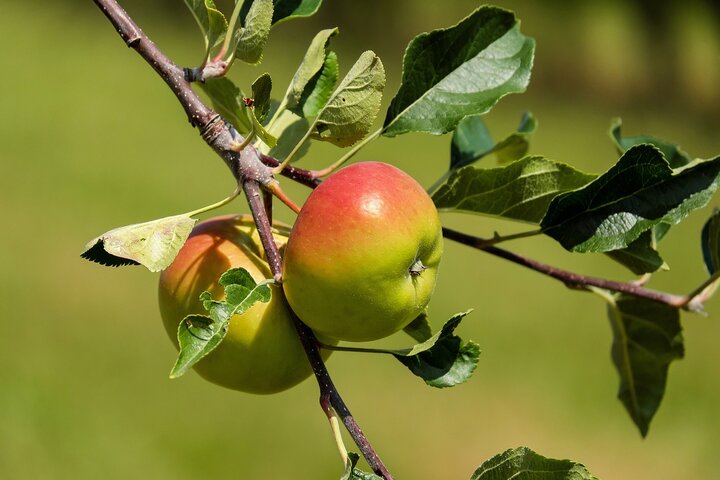Sarah Browning, Nebraska Extension Educator

Harvesting apples at the proper stage of development is the first step toward ensuring high quality produce.
Harvesting apples at the proper stage of development is the first step toward ensuring high quality garden produce that tastes great and stores well. If picked prematurely, apples are likely to be sour, tough, small and poorly colored; if picked overripe, they may develop internal breakdown and store poorly. This year, due to summer's high temperatures, apples may be prone to moving from ripe to rotting very quickly, with a shorter window for the mature ripe stage than usual. So pay close attention to ripeness stages and don't delay picking to ensure a good harvest.

Harvesting
To harvest apples correctly, you must be familiar with the term "ground color." Ground color is the color of an apple's skin, disregarding any areas that have become red. In red-fruited cultivars, observe the portion of the apple that faces the interior of the tree. When the ground color of red cultivars changes from leaf green to yellowish green or creamy, the apples are ready to harvest. In yellow cultivars, the ground color becomes golden.
Most apple cultivars have brown seeds when ready for harvest. However, seeds may become brown several weeks before proper picking maturity, so seed color should not be used as the sole method of evaluating maturity.
Early maturing apples, sometimes called 'summer apples', are ready for harvest in late August and early September, and include varieties such as Honeycrisp, Paula Red, Gala, and Jonagold. Summer apples may not maintain their quality in storage as long as later maturing varieties, and so are often eaten fresh.
Apples that are to be stored should be picked when mature, but hard: i.e., showing the mature skin color but with a hard flesh. Mature apples with a yellowish-green background color are suitable for storage. When harvesting, do not remove the stems since this wound will create an opening for rot fungi. Be sure to only store apples without bruises, insect or disease damage, cracks, splits, or mechanical injury. Any damaged fruits should be used for fresh eating, or processing.
Storage
Many cultivars of apples store moderately well under home storage conditions for up to six months. Late maturing varieties are best suited for long-term storage. These apples can be stored in baskets or boxes lined with plastic to help retain moisture. Varieties that tend to shrivel can be stored in plastic bags that have several holes for gas exchange. Always sort apples carefully and avoid bruising them. The saying 'one bad apple spoils the barrel' is true because apples give off ethylene gas which speeds ripening. When damaged, ethylene is given off more rapidly and will hasten the ripening of other apples in the container.
Because of their sugar content, apples can be stored at 30-32 degrees F without freezing the tissue. In general, apples ripen about four times as fast at 50 degrees F as at 32 degrees F, so they should be kept as close to 32 degrees F as possible for long-term storage. Apples will maintain their quality in storage for several months, anywhere from 2 to 6 months base on the cultivar.
Apples will pass their odor or flavor to more delicately flavored produce and the ethylene given off by apples can accelerate ripening in other crops. So when possible, store apples away from other fruits and vegetables.
Image from Pixabay
Search Our Archive
Associated Video
Edible Landscape Apples
Nebraska Extension Landscape Horticulture Specialist Kim Todd interviews Kimmel Orchard's Vaughn Hammond about new techniques for growing apples